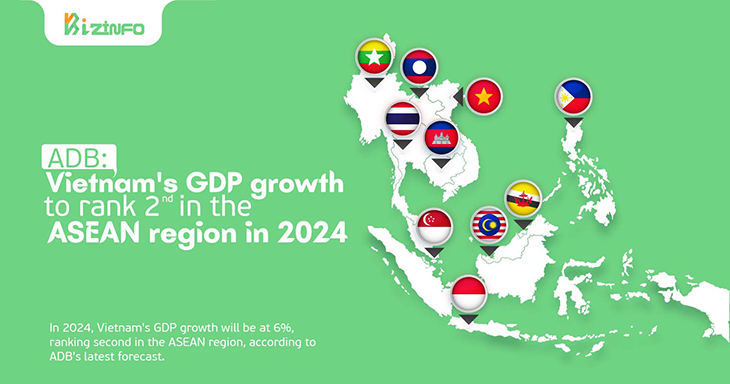Published Nov 2025
Vietnam Stock Market: Poised for Recovery by Year-End 2025
After a sharp correction in October, Vietnam’s stock market is stabilizing and poised for recovery, with the VN-Index likely to retest 1,800 by year-end 2025. Growth is expected to be led by banking (VCB, TCB, MBB), technology (FPT), and consumer stocks (PNJ, MWG), while investors should stay cautious with overleveraged real-estate firms. In this phase, VNBIS supports investors with trusted risk-management insights for smarter decisions and sustainable gains.

A Year of Surges, Setbacks, and Structural Shifts
Vietnam’s stock market has gone through a remarkable journey from the beginning of 2025 to the end of October. The VN-Index rose sharply from around 1,200 points in early January to nearly 1,800 points by late September, marking one of its strongest rallies since 2021. The growth was driven by macroeconomic resilience, strong corporate earnings expectations, and optimism surrounding Vietnam’s potential upgrade to emerging-market status.
Behind the rally was an increasingly confident investment community. Liquidity improved steadily throughout the year’sfirst half as interest rates remained stable, credit growth recovered, and foreign capital began returning to Vietnamese equities. The government’s continued emphasis on infrastructure spending and digital transformation also fueled confidence that corporate earnings would remain robust well into 2026.
However, as is often the case in fast-rising markets, momentum eventually gave way to caution. By late October 2025, the VN-Index faced a sudden correction, falling nearly 100 points in just a few sessions. The pullback was sharp but not unexpected: after six consecutive months of gains and valuations stretching to multi-year highs, a technical adjustment became inevitable.
Understanding the October Correction
The October downturn stemmed from a blend of domestic and international factors.
1. Technical Profit-Taking Pressure
After a relentless rally approaching the 1,800-point resistance zone, short-term investors began taking profits. Market data showed that trading volume remained high even as prices declined, suggesting strong rotation out of speculative positions into cash or defensive stocks. This profit-taking phase, while uncomfortable, is a typical part of a healthy market cycle.
2. Q3 2025 Earnings Divergence
The earnings-report season proved to be a turning point. As companies released their Q3 results, it became clear that performance was uneven across sectors. Banking and technology stocks reported robust growth, while real-estate and securities companies faced pressure from high borrowing costs and weaker consumer demand. This widening gap between winners and laggards triggered sectoral reallocation, as investors sought shelter in firms with stable fundamentals.
3. External Macroeconomic Headwinds
The external environment also played a key role in intensifying volatility:
- U.S. Federal Reserve Policy: The Fed’s persistent “higher for longer” stance on interest rates strengthened the U.S. dollar, putting pressure on emerging-market currencies, including the Vietnamese đồng (VND).
- USD/VND Exchange Rate: A stronger dollar pushed the exchange rate toward record levels, raising expectations that the State Bank of Vietnam (SBV) might need to intervene through foreign-exchange operations — potentially tightening domestic liquidity.
- Foreign Investor Sentiment: Between October 20 and 24, foreign investors recorded a net selling value of approximately VND 4,928 billion, creating both psychological stress and real supply pressure on the market.
These combined forces led to one of the sharpest weekly declines in years. Yet, most analysts view this as a short-term technical correction rather than the start of a deeper bear phase.
The Broader Economic Context
Vietnam’s macroeconomic picture remains encouraging. GDP growth for 2025 is forecast at 6.5%–6.8%, supported by manufacturing exports, resilient domestic consumption, and solid FDI inflows. Inflation is under control, hovering around 3%, and fiscal policy prioritizes growth-supportive infrastructure spending.
The government’s ongoing efforts to improve Vietnam's capital market, particularly the move to elevate it from frontier to emerging-market status, are increasingly catching the attention of more institutional investors. FTSE Russell’s optimistic outlook and possible reclassification in 2026 could welcome billions of dollars in new foreign investments. This would help to make the market more liquid and broaden the range of investors involved.
Additionally, ongoing improvements to trading infrastructure, new regulations on corporate bond transparency, and a greater emphasis on digital transformation all support the structural modernization of Vietnam’s stock market.
Market Outlook: November–December 2025
As the market exits its correction phase, sentiment is gradually improving. Analysts expect stabilization during November and a possible rebound in December, driven by renewed domestic inflows and more substantial investor confidence.
Three primary catalysts may support a recovery:
-
Earnings Absorption:
The market has priced mainly in weaker Q3 results. Investors are refocusing on stocks with sustainable profit growth, cost discipline, and strong balance sheets. -
Exchange-Rate Stabilization:
If remittances and FDI inflows continue, the VND should strengthen slightly, allowing the SBV to maintain an accommodative monetary stance through year-end. -
Psychological Boost from Market-Upgrade Progress:
Even though the reclassification is a medium-term story, ongoing policy alignment with international standards provides confidence that Vietnam is moving in the right direction.
Given these factors, the VN-Index will likely consolidate within the 1,650–1,750 range in November and may retest the 1,800-point level in December, provided global conditions remain stable. This pattern reflects the end of a correction cycle and the beginning of a new accumulation phase.
Sectoral Review and Analysis
Banking: The Market’s Backbone
Banking stocks continue to underpin the VN-Index. Most major banks reported solid profit growth in Q3, supported by healthy credit expansion and improved fee-based income from digital services and bancassurance.
- Vietcombank (VCB) and VietinBank (CTG) maintain leading market share and robust capital buffers.
- Techcombank (TCB) and MB Bank (MBB) are expanding aggressively into retail and SME lending while investing heavily in digital platforms.
While non-performing loans (NPLs) have increased slightly, they remain within manageable limits. Rising risk-provision expenses have moderated profit growth but strengthened asset quality. Overall, the banking sector remains the market's most stable and liquid pillar.
Real Estate: Gradual Recovery, Not Full Rebound
The real estate sector continues to face challenges, particularly in the residential segment. High interest rates and subdued purchasing power have slowed new home sales, while many developers still struggle with bond maturities and legal bottlenecks.
However, certain bright spots are emerging. Companies like Vinhomes (VHM), Khang Dien House (KDH), and Nam Long Group (NLG) reported improved revenue as they recognized income from project handovers. Meanwhile, industrial-park developers such as IDC and VGC benefit from strong land-lease demand linked to new foreign manufacturing investments.
This selective recovery highlights a broader trend: capital flows toward firms with clean balance sheets, transparent governance, and exposure to industrial real estate rather than speculative housing projects.
Securities: High Beta, High Risk
Securities firms enjoyed substantial gains in the first half of 2025 thanks to booming trading volumes and profitable proprietary portfolios. Yet the late-October correction exposed their vulnerability to market swings.
- SSI and VCI remain sector leaders with diversified income and strong financial capacity.
- Smaller brokerages, however, are being squeezed by higher funding costs and rising margin-loan interest rates.
Liquidity volatility will likely weigh on Q4 results, but the long-term outlook remains constructive as Vietnam’s market matures and derivative trading expands.
Technology & Telecommunications: Structural Growth Stories
Technology and telecom companies such as FPT and Viettel Post (VTP) continue to perform steadily. FPT’s software exports and education divisions maintain double-digit growth, while VTP benefits from the rapid expansion of e-commerce logistics. This sector remains relatively insulated from domestic credit cycles, making it an attractive defensive play with long-term upside.
Retail & Consumer Goods: Year-End Spending Catalyst
Vietnam’s consumer sector tends to strengthen in the final quarter due to the Tết (Lunar New Year) spending season. Companies like Phu Nhuan Jewelry (PNJ) and Mobile World (MWG) are expected to see robust Q4 sales, while Masan Group (MSN) could benefit from improving retail demand once debt pressures ease.
This seasonal effect will lift overall consumption and support short-term sentiment for consumer-oriented stocks.
Investment Suggestions
After the October correction, the market offers selective buying opportunities rather than a broad rally. Investors should prioritize quality blue-chip stocks with strong balance sheets and sustainable earnings. Banking leaders such as VCB, TCB, and MBB are suitable for accumulation, providing growth and dividend potential. IDC and VGC remain attractive in the industrial-real-estate segment due to solid FDI inflows. FPT is recommended for long-term exposure to digital transformation, while PNJ and MWG can benefit from seasonal consumer spending. Meanwhile, investors should reduce exposure to highly leveraged real-estate developers and small brokerages reliant on margin lending. The short-term strategy is “buy quality, hold patience, avoid speculation.”
Risk Management and the Role of VNBIS
Accurate risk assessment becomes essential in a market characterized by sharp fluctuations and sector differences. This is where Vanguard Business Information LLC (VNBIS) offers vital value.
As a leading provider of business intelligence and financial-risk services, VNBIS offers company-level reports, litigation and directorship checks, and ownership-mapping tools covering over 600,000 Vietnamese enterprises. These insights help investors, banks, and corporate clients to:
- Evaluate a company’s financial health and solvency;
- Detect legal or operational red flags before committing capital.
- Benchmark firms against industry peers for risk comparison.
- Integrate risk data directly into investment or credit-decision frameworks.
By relying on VNBIS reports, investors can confidently navigate volatility, distinguishing between temporary corrections and fundamental weaknesses. In an environment where rumors and speculation can move markets quickly, verified intelligence is the difference between protection and exposure.
Technical and Strategic Outlook
From a technical point of view, the VN-Index is now nearing a crucial support zone between 1,650 and 1,700 points. Trading momentum indicators indicate that selling pressure is decreasing, while buying demand is gradually returning at lower price levels. If global conditions stabilize and foreign inflows pick up again, the index could rebound toward 1,800 points by December 2025.
In the medium term, analysts foresee a sideways-up trajectory heading into early 2026, supported by stable macro conditions, high credit growth, and the market-upgrade narrative. The key risk factors to monitor include persistent USD strength, slower global growth, or renewed real-estate stress.
Nevertheless, the core story stays strong: Vietnam keeps blending growth, reform, and demographics, making it one of the most exciting equity markets in Asia.
Conclusion
The first ten months of 2025 highlight the dual nature of Vietnam’s capital market, lively yet unpredictable, hopeful yet requiring discipline. The late-October decline, though sharp, has reset valuations and restored balance. With macroeconomic fundamentals still strong, easing exchange-rate pressure, and investor confidence gradually returning, the market is well positioned for recovery in the final months of the year.
For investors, the key is to stay selective, data-driven, and risk-aware. By using reliable insights from VNBIS, one can reduce financial risks and capitalize on opportunities in sectors and companies poised for sustainable growth. As Vietnam’s financial market continues to transform, those who invest wisely, guided by information rather than emotion,will be the first to benefit from the next growth wave of 2026.















